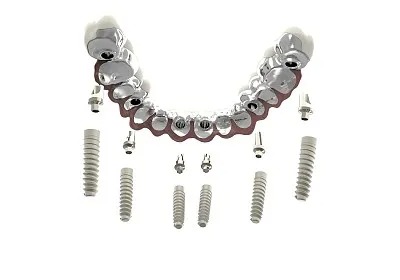Enhancing Smiles through Innovative Dental Implant Treatments for Lasting Confidence and Improved Oral Health Solutions
Summary: The advancement of dental implant technology has revolutionized restorative dentistry, providing patients with a reliable alternative for enhancing their smiles. This article delves into the various innovative treatments available, dissecting their benefits, processes, and the long-term positive impacts on both oral health and personal confidence. The exploration focuses on four pivotal aspects: the technological advancements in dental implants, the process of implant placement, the psychological benefits of enhanced smiles, and ongoing maintenance for long-lasting results. By understanding these components, individuals can make informed decisions regarding their dental health and experience transformative changes in their quality of life.
1. Technological Advancements in Dental Implants

Modern dental implants have benefitted significantly from technological advancements. One of the most groundbreaking developments is the use of 3D imaging technology, which allows for precise planning and placement of implants. This precision reduces margins for error, leading to a higher success rate in implant surgeries. Consequently, patients can enjoy quicker recoveries and fewer complications.
Another noteworthy innovation is the introduction of biocompatible materials that closely mimic natural tooth structure. Titanium implants are commonly used due to their strength and ability to fuse with the jawbone through a process called osseointegration. This ensures lasting stability for the implant and provides a foundation that resembles natural teeth more closely than ever.
Moreover, advancements in minimally invasive surgical techniques have made dental implantation less intimidating for patients. With techniques such as guided implant surgery, dentists can position implants with minimal tissue disruption, resulting in reduced swelling and discomfort. This modern approach not only enhances patient comfort but also shortens the recovery period significantly.
2. The Implant Placement Process Simplified
The dental implant placement process is complex but can be streamlined to ensure patient understanding and comfort. Initially, a thorough assessment is conducted, including dental x-rays and 3D scans, which help create a personalized treatment plan. This assessment enables the dentist to evaluate the jawbones density and determine the best placement for implants.
Following the assessment, the surgical phase begins, often involving local anesthesia to ensure patient comfort. During this phase, implants are surgically placed into the jawbone, serving as a root for the replacement teeth. The dentist may place a healing cap atop the implant to aid in tissue healing and allow for osseointegration to occur.
After the healing period, which typically spans several months, dental crowns can be custom-made and affixed to the implants. This results in a seamless transition where the new teeth blend perfectly with existing ones, restoring both functionality and appearance. Post-treatment follow-ups are essential to monitor the success and health of the implants throughout this timeline.
3. Psychological Benefits of Enhanced Smiles
The psychological impact of dental implants extends beyond the physical appearance of a smile. Many individuals experience a psychological lift once they receive their implants, leading to improved self-esteem and confidence. A beautiful smile can profoundly affect social interactions and personal relationships, enabling individuals to engage more freely without feeling self-conscious about their teeth.
Additionally, individuals with missing teeth often suffer from anxiety and embarrassment, which can lead to social isolation. Dental implants address these concerns by offering a permanent solution that allows individuals to smile freely, speak clearly, and enjoy meals without fear of discomfort or awkwardness.
Many patients report a newfound joy in life after undergoing dental implant procedures, attributing their enhanced mood to the social ease a new smile brings. This boost in confidence can ripple through various aspects of life, from professional opportunities to personal relationships, showcasing the importance of investing in oral health.
4. Ongoing Maintenance for Longevity
Although dental implants are designed for durability, ongoing care is crucial for their longevity. Routine dental check-ups combined with good oral hygiene practices can significantly enhance the lifespan of an implant. Patients are encouraged to brush and floss regularly, just as they would with natural teeth, to prevent any potential buildup of plaque and bacteria.
Moreover, lifestyle choices play an integral role in the success of dental implants. Avoiding smoking and excessive consumption of sugary foods can protect implants from complications. Regular visits to a dental professional are vital for monitoring implant health and ensuring that surrounding tissues are healthy, thus preventing any further dental issues.
Education regarding the correct care of dental implants can greatly impact their effectiveness and longevity. Dentists often provide personalized care instructions, ensuring that each patient understands how to maintain their new smile for years to come.
Summary: The journey toward an enhanced smile through innovative dental implant treatments encapsulates much more than the dental procedure itself. It encompasses advanced techniques and technologies that facilitate precise treatment, the psychological uplift an improved smile provides, and the importance of ongoing maintenance. Investing in dental implants not only alters the landscape of oral health but enhances quality of life, fostering confidence and well-being.
This article is compiled by Vickong Dental and the content is for reference only.



